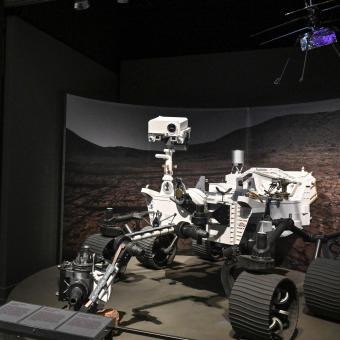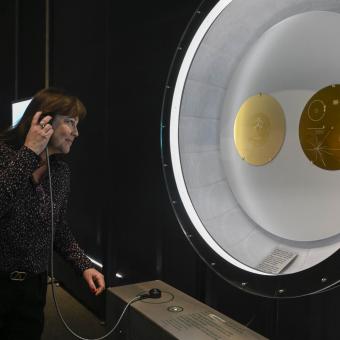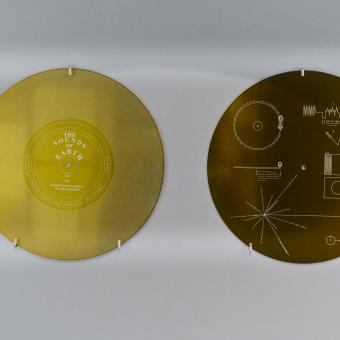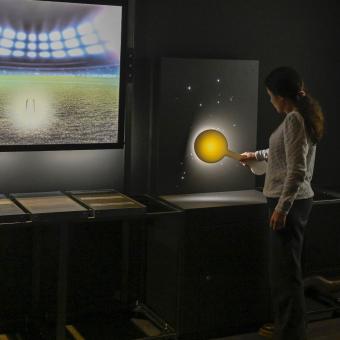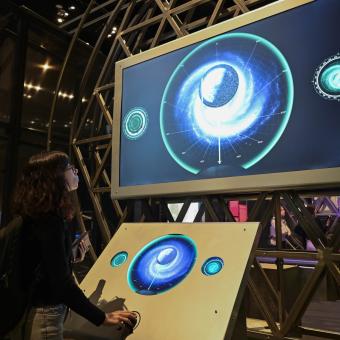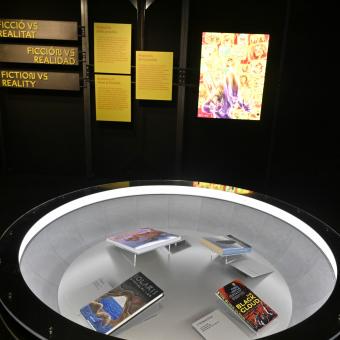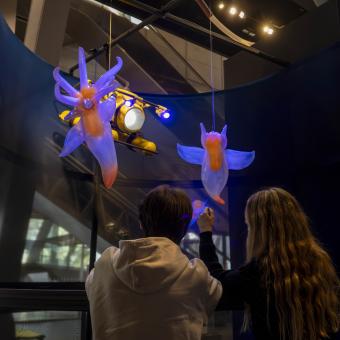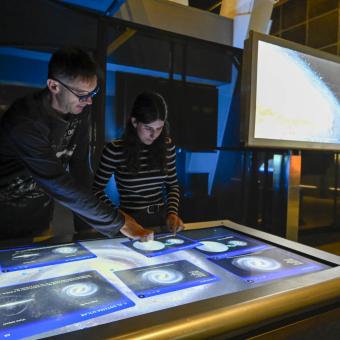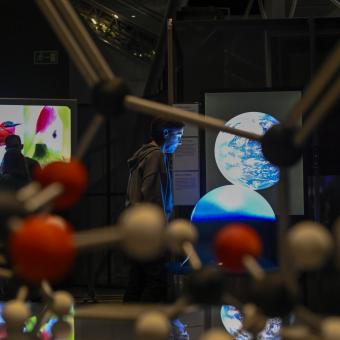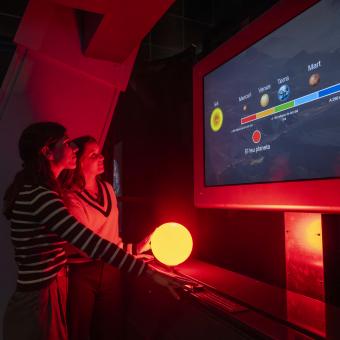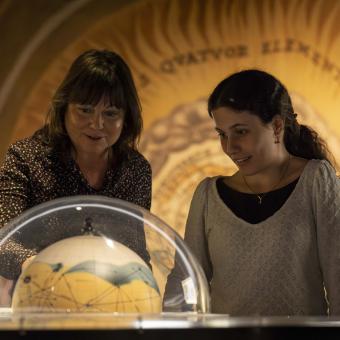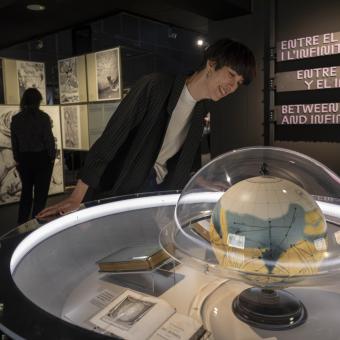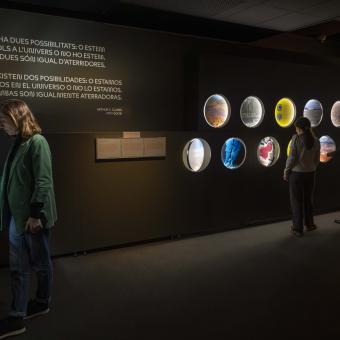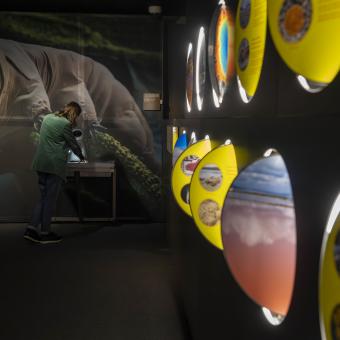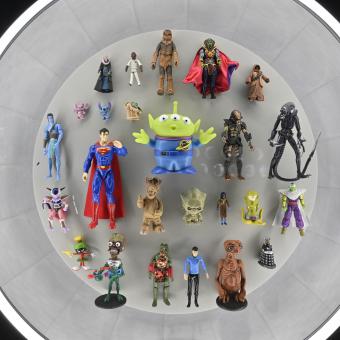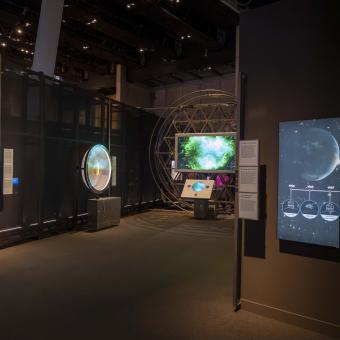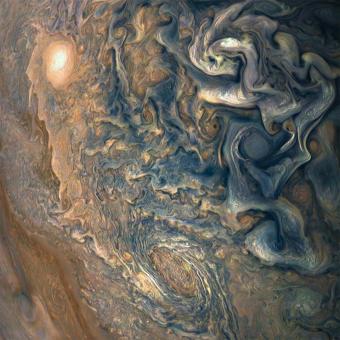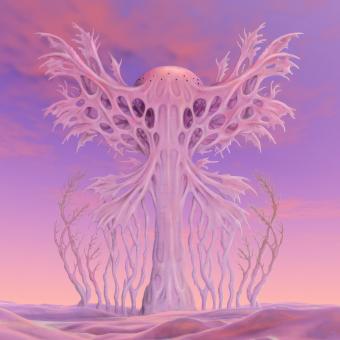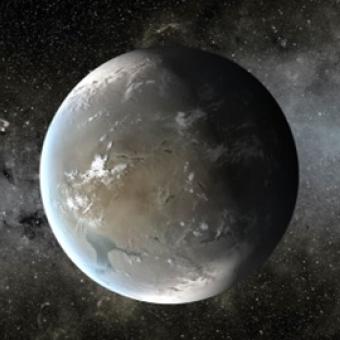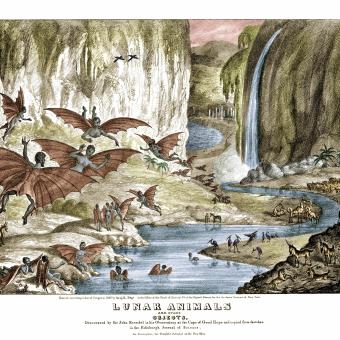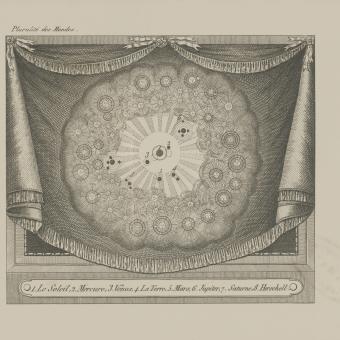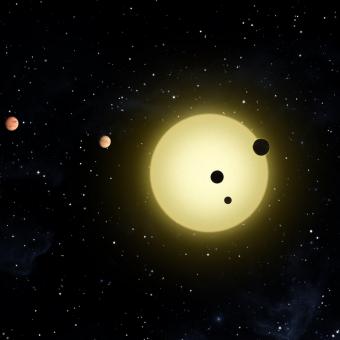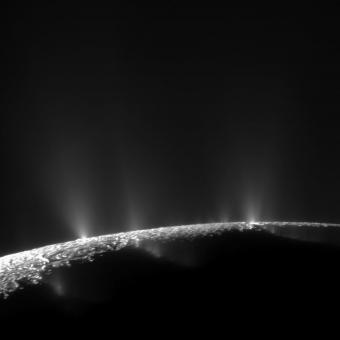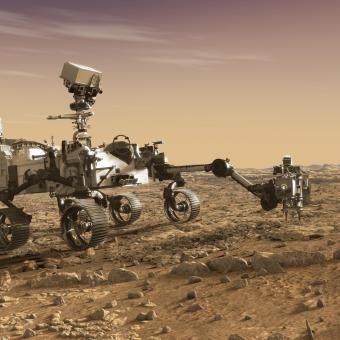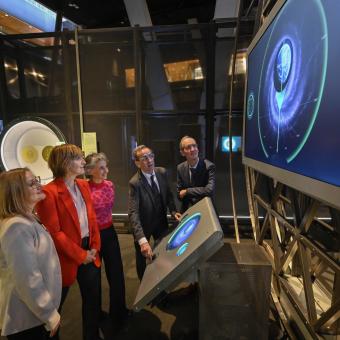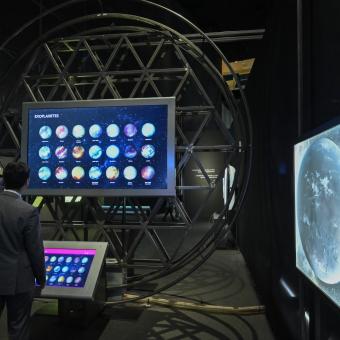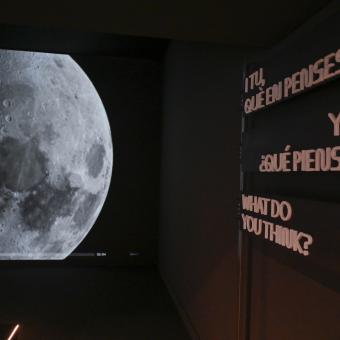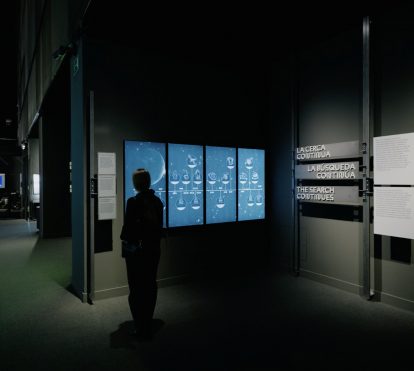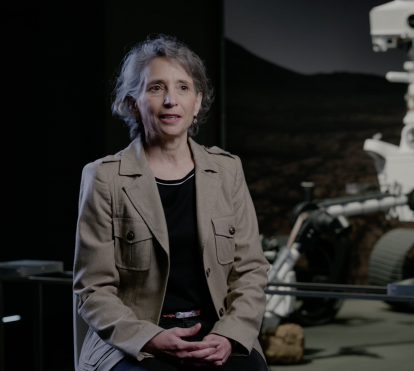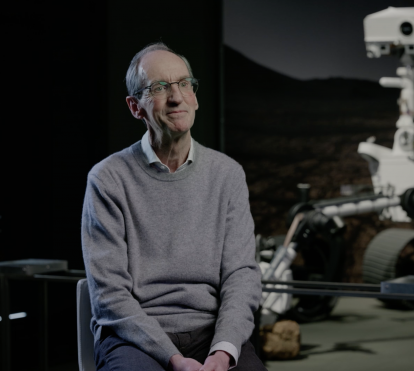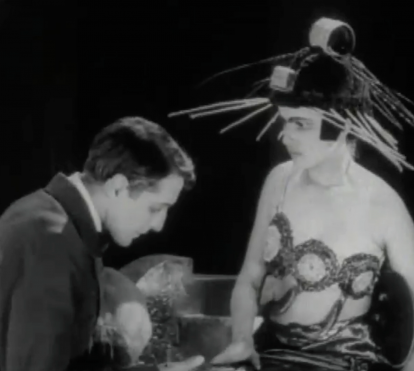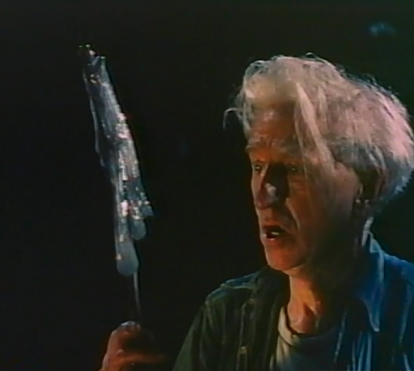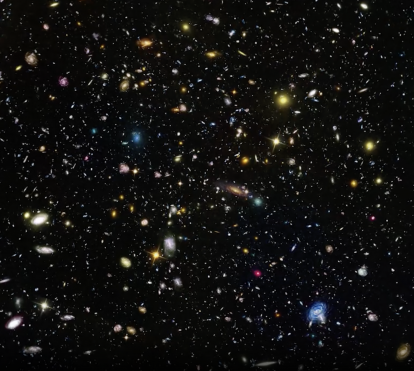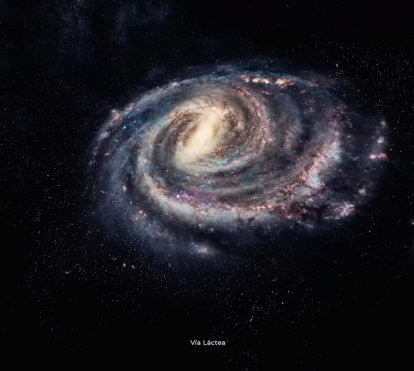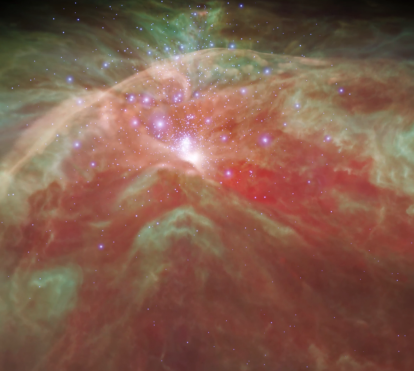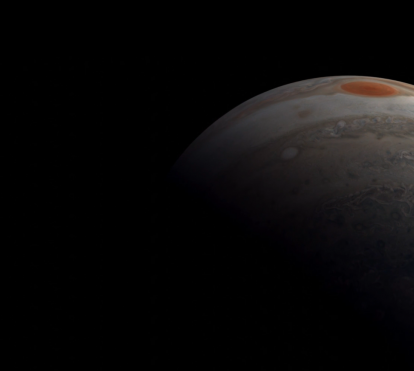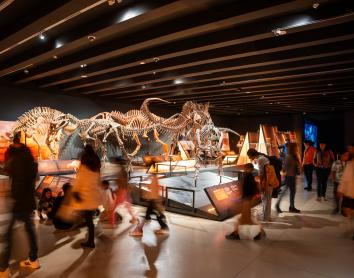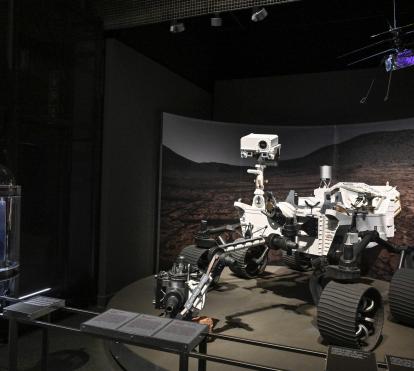
The CosmoCaixa Science Museum explores the answers to one of humanity’s greatest questions: the possibility that we are not alone in the universe. The exhibition Extraterrestrials. Is There Life Outside Earth? presents a fascinating and scientifically rigorous narrative that delves into topics such as our place in the cosmos, the meaning of the concept of life, and how literature and cinema have shaped a collective imaginary about extraterrestrials.
This Tuesday, the director of the CosmoCaixa Science Museum, Valentí Farràs, and the astrophysicist Montserrat Villar presented Extraterrestrials. Is There Life Outside Earth?, an inspiring exhibition exploring one of humanity’s greatest questions for millennia: Are we alone in the universe? To this day, there is still no conclusive evidence, but for the first time in history, scientific and technological advances allow us to glimpse an answer to this great mystery.
This is an in-house exhibition organised by the ”la Caixa” Foundation, based on an idea developed by the exhibition’s scientific advisors: Montserrat Villar Martín, PhD in Physical Sciences, astrophysicist and researcher at the Centre for Astrobiology (CAB) CSIC-INTA; Eva Villaver Sobrino, PhD in Physical Sciences, astrophysicist and research professor at the Institute of Astrophysics of the Canary Islands (IAC); Ester Lázaro Lázaro, PhD in Biological Sciences, virologist, molecular biologist and researcher at CAB CSIC-INTA; and Benjamín Montesinos Comino, PhD in Physical Sciences, astrophysicist and also a researcher at CAB CSIC-INTA.
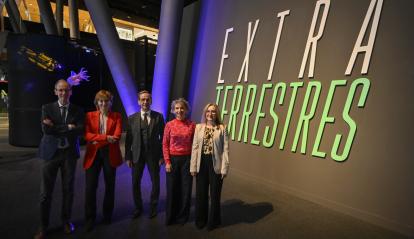
With the help of these experts, the exhibition – structured into five areas – builds a narrative aimed at clarifying doubts through the dissemination of existing scientific knowledge, challenging clichés, exploring possible futures and inspiring visitors to imagine what discovering life outside Earth would mean for humanity.
The exhibition begins by situating us in the cosmos, since understanding our place in it leads us to wonder whether extraterrestrial life exists. It then explores, from a historical perspective, the great philosophical debate between those who argue for the uniqueness of life on Earth and those who believe in the existence of other inhabited worlds. The exhibition also examines how we humans have imagined alien worlds and life forms, and how we have depicted them in art, film and literature, while also showcasing Earth’s extreme environments, home to organisms that seem straight out of science fiction. Finally, through scientific evidence, the exhibition presents the current state of research in this field while also considering possible future scenarios, should we one day discover life beyond our planet.
Extraterrestrials. Is There Life Outside Earth? features a carefully designed and thought-provoking exhibition space, showcasing scenographic displays and models such as the Perseverance rover and the Ingenuity helicopter – two robots created by NASA to explore the surface of Mars. It also includes replicas of the golden records carried on the Voyager spacecrafts, sent into interstellar space carrying sounds and images from Earth, as well as artistic representations of radio telescope antennas like those used in the SETI (Search for Extraterrestrial Intelligence) project. Additionally, the exhibition features real artefacts, including the Ksar Ghilane 002 meteorite, which originated from Mars.
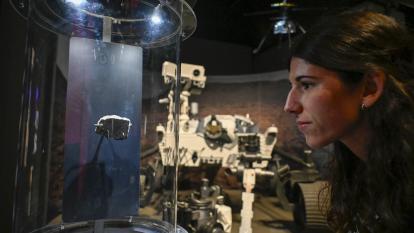


Staying true to the essence of CosmoCaixa, the exhibition features various interactive elements, including a touch table for exploring the galaxy, a module on the circumstellar habitable zone to understand the physical conditions required for a planet to support life as we know it, and three modules showcasing the different techniques currently used to detect exoplanets. Visitors can also test themselves by trying to guess from their appearance whether certain creatures displayed in the exhibition are real terrestrial beings or, on the contrary, fictional extraterrestrials.
Audiovisuals also play a key role in the exhibition, featuring clips from films such as E.T. the Extraterrestrial, Close Encounters of the Third Kind and The Blob. These examples illustrate how humans have often depicted extraterrestrials based on familiar elements from our own world, with such representations frequently reflecting our fears or beliefs.
The itinerary concludes with an immersive sensory experience where visitors, surrounded by images from NASA and ESA missions of star fields, nebulae and planets, can reflect – based on all the information gathered throughout the exhibition – on the possibilities of finding life outside our world and what they imagine it might be like.
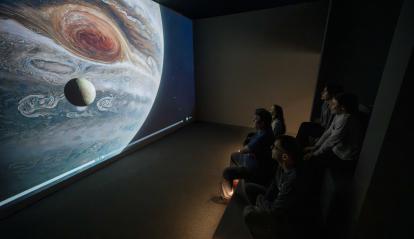
Extraterrestrials: beyond the exhibition hall
- Explain it to me! Could extraterrestrials have already detected us?
Wednesday 19 March 2025 | 7 p.m.
In this new session of the Explain it to me! series, experts in scientific subjects will respond rigorously and with evidence to curiosities of our daily lives, always explaining the science behind them. In this talk, astrophysicist David Galadí and science journalist Cristina Sáez will engage with the audience as they explore whether hypothetical extraterrestrials could detect us using the same methods we use to identify exoplanets – and whether they would classify Earth as a habitable world.
- Series The frontiers of astrobiology
October and November 2025
This lecture series, coordinated and moderated by Ignasi Ribas, director of the Institute of Space Studies of Catalonia (IEEC), will bring leading figures in the field to CosmoCaixa, including the British astrobiologist Charles Cockell, the astrophysicist David Kipping, the geologist Frances Westall and the astrophysicist Laura Kreidberg.
- Science
to spark the debate: Is there life out there?
Wednesday 24 April 2025 | 7 p.m.
In this participatory experience for adults, attendees will take part in hands-on experimental workshops and watch scientific demonstrations in unique spaces of the museum, guided by experts who will encourage reflection on the topic of the day, in this case extraterrestrial life. Helena González-Burón and Oriol Marimon Garrido, from Big Van Science, will be joined by Xavier Luri Carrascoso, professor in the Department of Quantum Physics and Astrophysics at the Universitat de Barcelona. From the Planetarium, they will transport participants to distant scenarios and analyse potentially habitable celestial bodies. In the laboratory, they will also demonstrate how life on Earth adapts to extreme environments, prompting a discussion on how it might evolve on other planets, both within our solar system… and beyond.
- Windows to the universe
May and June 2025
CosmoCaixa presents a new edition of this successful astronomy outreach course, coordinated by Benjamín Montesinos Comino (Centre for Astrobiology, CAB, CSIC-INTA), which was first launched in 2022. The five lectures in this edition will help to understand, from a strictly scientific perspective, the progress being made in the search for life on other worlds. This year’s speakers include Benjamín Montesinos Comino and Ester Lázaro Lázaro (Centre for Astrobiology, CAB, CSIC-INTA), Agustín Sánchez Lavega (University of the Basque Country, EHU/UPV), and Juan Carlos Morales Peralta and Mar Mezcua Pallerola (Institute of Space Sciences, ICE-CSIC and IEEC). The course also includes an astronomical observation session led by ASTER (Barcelona Astronomical Association).
- A night at te museum: Sleeping among extraterrestrials
Saturdays, 24 May, 28 June, 26 July, 27 September, 25 October, 29 November and 27 December, at 7.30 p.m. (in Catalan); and Saturdays 19 April and 30 August, at 7.30 p.m. (in Spanish)
The exhibition becomes the setting for a truly special night, designed for families with children aged seven to 12. Participants will explore the museum by torchlight, end the day with stories of extraterrestrials, sleep in the museum while imagining what life might be like elsewhere in the universe, and take a morning stroll through the Flooded Forest to see its inhabitants wake up.
- Escape room: Rescue on the Moon
This activity, recommended for children aged 10 and over, simulates a scientific rescue mission on the Moon. Participants will have 45 minutes to recover hypothetical biological samples and send them back to Earth.
- Astronaut academy workshop
From 12 April. Check the website for details
En este taller, recomendado a partir de 5 años,los asistentes podrán descubrir y experimentar en persona el complejo entrenamiento físico y psicológico de los y las astronautas.
- Interactive show: Who wants to be an astronaut?
From 12 April. Check the website for details
In collaboration with the European Space Agency (ESA), this activity immerses participants in the world of astronaut selection. Astronauts are extraordinary individuals with unique skills, capable of staying calm in extreme situations, solving problems with ingenuity, working seamlessly in a team and adapting to the most incredible challenges. Participants will have the chance to take some of the tests used by the ESA to test memory, concentration, logic and analytical skills, spatial awareness, manual dexterity, communication abilities and teamwork skills. Activity recommended for ages ten and over.
- Open learning space
From 12 April. Check the website for details
This interactive learning space is designed for the whole family, offering various resources to explore in depth, with the help of mediators, how the search for extraterrestrial life is conducted. It provides a comfortable environment where children aged three and over can enjoy learning through play with puzzles, games, microscopes, reference books, creative activities, microorganisms, magnifying glasses, costumes and even soft toys.
- The exhibition will be complemented, as
usual, by guided tours, guided tours with discussion, family tours for children aged four and over and eight and over, and interactive educational visits that offer an engaging exploration
of the exhibition content with the support of an educator. The museum also offers
themed menu packages in the restaurant combined with a guided tour of the
exhibition for both general and family audiences, as well as experience packs
on the exhibition’s theme tailored to different age groups. For further
information, check this link.
